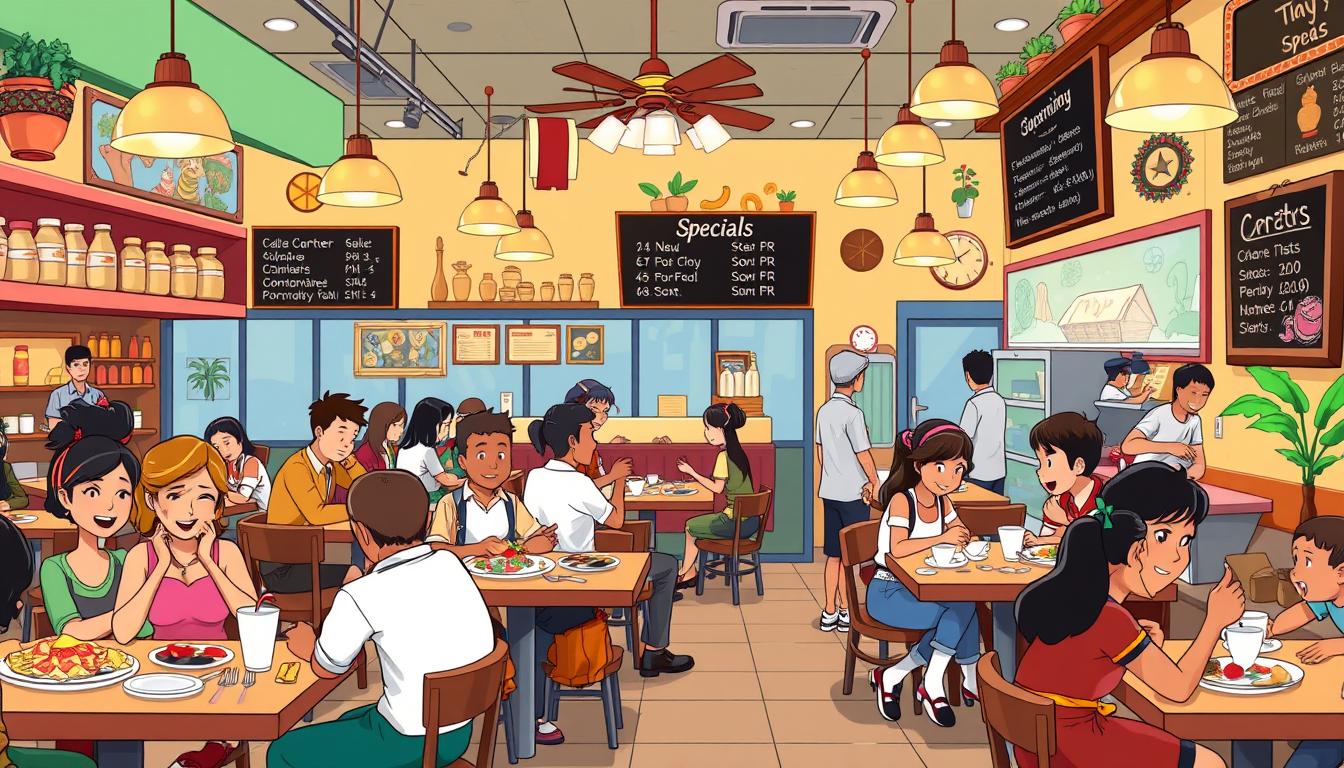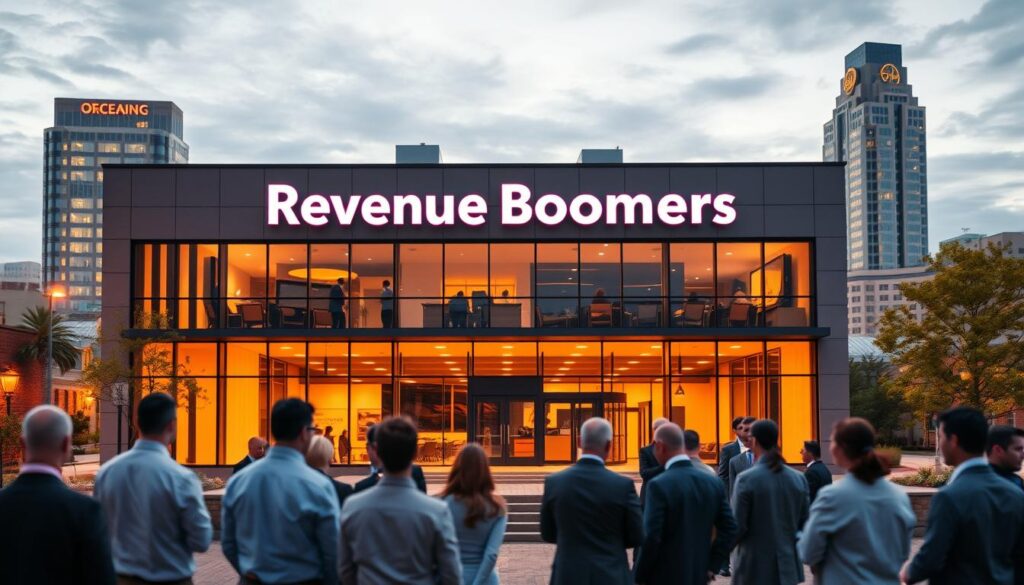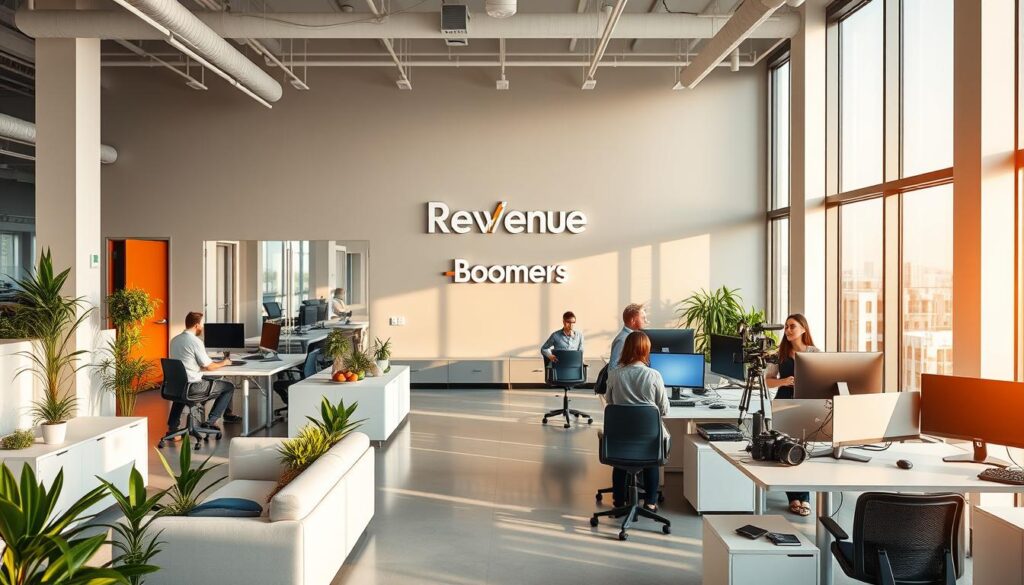In the U.S., over 100,000 restaurants compete for diners’ attention. How can yours stand out? The key is in marketing strategies that speak to today’s diners. With 89% of people researching online before dining out, boosting your online presence is crucial.
Optimizing your Google Business Profile and creating engaging social media content are vital. Every part of Restaurant Marketing Strategies helps attract and keep customers. This article will cover important topics like loyalty programs and the power of online reviews. For more, see this resource on successful SEO tactics for.
Remember, a successful restaurant not only attracts customers but also builds loyalty and community.
Key Takeaways
- Using both online and offline strategies can greatly increase your restaurant’s visibility.
- Direct online ordering can save a lot of money and increase your earnings.
- Loyalty programs encourage people to come back and can greatly improve customer retention.
- Quickly responding to online reviews can help shape a positive public image and brand.
- Regularly checking your marketing strategies helps you stay competitive.
- Having a dedicated website with online ordering makes things easier for customers and builds loyalty.
- Social media is key for reaching more people and building a community around your restaurant.
Understand Your Target Audience
Knowing your target audience is key for any restaurant wanting to boost its marketing. It involves looking at demographics, psychographics, and how people behave. By getting these, restaurants can make their food and marketing just right for their customers.
Demographics and Preferences
Demographics shape what customers like to eat. Age, income, gender, and where they live all play a part. For example, younger people like casual places, while older folks spend more on dining and use tech for tips.
Millennials want food that’s fresh and good for the planet. This shows how different people have different tastes. Using census data and talking to customers can give you a better idea of what they want.
Dining Behavior Trends
It’s important to know how people act when they go out to eat. Rich folks do their homework online before they go, valuing reviews. But, people with less money might try new places more often.
City folks like to try new places, thanks to online reviews. But, those in suburbs and rural areas prefer places that are good for families. By watching what others do and how spending changes, restaurants can make their marketing better. Knowing your target audience well lets you make messages that really speak to them. For more on this, check out SEO strategies for caterers.
Craft a Unique Selling Proposition (USP)
In a competitive dining world, having a clear Unique Selling Proposition (USP) is key. Knowing what makes your restaurant special is the first step. This could be awards for gourmet food, a focus on sustainability, or offering the best prices.
Identifying What Sets You Apart
Think about offering signature dishes that are family recipes or traditional. A short, catchy phrase can grab attention. It could be a Facebook post or a Tweet. Each part should match your brand, building loyalty.
Communicating Your USP Effectively
Your USP should be the same everywhere, making your brand clear to customers. Use market analysis and feedback to improve your message. Knowing what customers want and what your competitors offer helps you stand out.
| Characteristics of a Strong USP | Benefits |
|---|---|
| Awards and reviews for gourmet cuisine | Builds credibility and attracts discerning customers |
| Sustainability through organic ingredients | Appeals to eco-conscious diners |
| Competitive pricing | Attracts a larger customer base |
| Signature dishes | Differentiates menu offerings |
| Distinctive ambiance | Enhances the dining experience |
| Streamlined operations | Increases customer satisfaction with speed |
A strong Unique Selling Proposition shows what makes your restaurant unique. It gives customers a reason to choose you. For more on personal branding, see this guide on building your personal brand.
Utilize Social Media for Engagement
Social media is key for restaurants wanting to draw in more customers. By picking the right platforms, creating engaging content, and talking to their audience, restaurants can attract and keep diners.
Choosing the Right Platforms
It’s important to choose the right social media platforms. Instagram is great for food pictures. Facebook helps with community talks and events. Restaurants see more reservations and orders with the right posts.
Creating Appealing Content
Good content is crucial for social media success. Share tasty food pics, behind-the-scenes shots, and what customers say. Keep your social media fresh with special deals and events to draw in more visitors.
Engaging with Your Audience
Talking to diners builds a loyal fan base. Answer comments and messages to create a community feel. Even negative feedback can be turned into a chance to build a relationship. Tools like Jetpack Social help keep your social media active without taking up too much time.
| Platform | Benefits | Engagement Rate |
|---|---|---|
| Visual storytelling; perfect for food photography | 60% increase in reservations reported | |
| Community building; event promotion | 2.3 times more engagement with images | |
| Real-time interactions; quick announcements | 150% more retweets for image posts |
By using these strategies, restaurants can build a loyal following. This helps them stand out in a crowded market. For more tips on boosting restaurant traffic, check out this resource here.
Implement Loyalty Programs
Loyalty programs are key to keeping customers coming back in the restaurant world. With over ten thousand new restaurants opening in 2023, it’s vital to have strong Customer Loyalty Programs to stand out. A good loyalty program rewards regular customers and makes their dining experience better, strengthening the bond between them and the restaurant.
Types of Loyalty Programs
Restaurants can choose from many types of loyalty programs. Here are some common ones:
- Points-Based Systems: Customers get points for every dollar they spend, which can be used for discounts or free items.
- Item-Based Rewards: This system rewards customers for buying specific menu items using punch cards.
- Subscription-Based Programs: Customers pay a fee for perks like exclusive discounts or early access to new menu items.
- Promotional Rewards: These are special offers that encourage customers to behave in certain ways, like coming in on a specific day.
- Online Ordering Rewards: This combines in-person and online orders, attracting more customers through technology.
Benefits for Diners and Restaurants
Loyalty programs bring big benefits to both diners and restaurants. Diners get personalized rewards that make them feel closer to the brands they love. Restaurants see a big boost in customer retention, with studies showing a 5% increase can lead to a 25% to 95% increase in profits, according to Harvard Business Review.
Success stories like Panera Bread’s MyPanera and Chipotle Rewards show how effective loyalty programs can be. These programs offer great benefits and excellent service. A whopping 90% of businesses with loyalty programs see a positive return on investment, averaging 4.8 times their initial investment. By using customer data, restaurants can send targeted marketing messages, boosting engagement and encouraging repeat visits. Good SEO strategies can also help attract more customers to these rewarding programs.
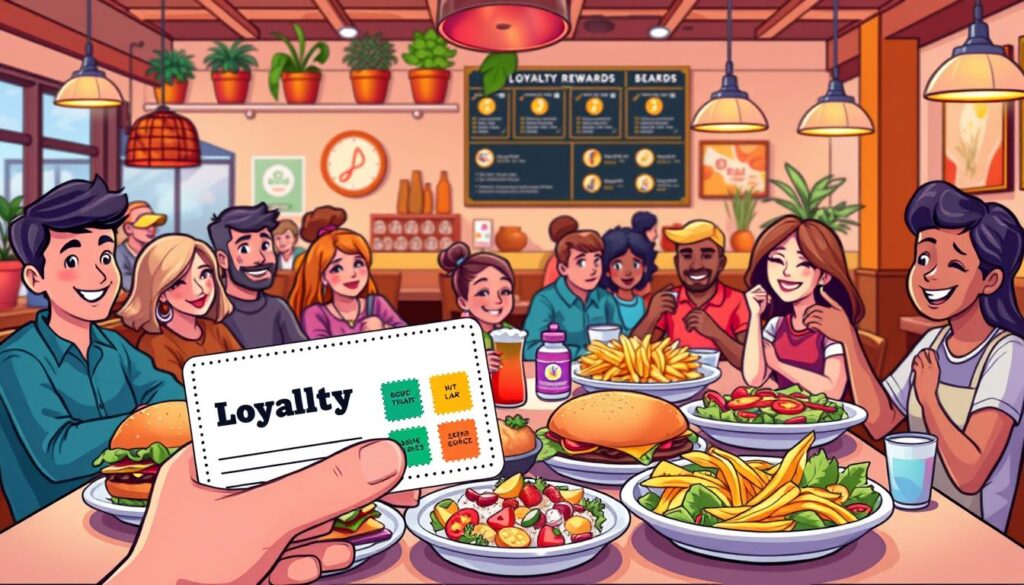
Optimize Your Online Presence
Today, having a strong online presence is key for restaurants. With more people ordering food online, a good website is crucial. It helps attract new customers and improve visibility.
Features like a user-friendly interface and mobile responsiveness are essential. They make your website effective for Digital Marketing for Restaurants.
Importance of a User-Friendly Website
A website that’s easy to use is vital. It lets potential diners find what they need quickly. Key features include:
- High-quality images: Show your menu and atmosphere to attract customers.
- Digital menus: Make your menu easy to access for a better experience.
- Reservation tools: Help diners book quickly, especially on the go.
- Mobile-friendly design: Since many search on phones, your site must be mobile-friendly.
Leveraging SEO for Visibility
For restaurants to shine, using Local SEO for Diners is key. Make sure your listings on Google My Business are up-to-date. Use local keywords in your content.
Good SEO boosts your visibility and helps locals find you. Content that shows your restaurant’s personality helps attract and keep customers.
Use analytics to see how your website is doing. This helps you improve your marketing. Since 86% of diners check online before eating out, a strong online presence is vital.
Listen to customer feedback and manage online reviews to improve your reputation. This can increase sales and build stronger customer relationships. Use these tips to boost your digital presence and stand out in the restaurant world.
Leverage Online Reviews and Reputation Management
Online reviews play a big role in how people see your restaurant. Good Online Reputation Management can help bring in more customers. Here are two key things to think about for a better online reputation.
Encouraging Customer Feedback
Getting customers to share their thoughts is important. You can do a few things to make it happen:
- Send emails after visits to thank them and ask for feedback.
- Use social media to ask people to leave reviews.
- Give rewards for leaving reviews, like discounts or points.
Since 94% of people pick restaurants based on online reviews, getting feedback is crucial. Good reviews can bring in more people and make them loyal to your brand.
Responding to Reviews
It’s not just about getting feedback. You also need to respond to it. Here’s how:
- Thank people for positive comments.
- Fix any problems mentioned in negative reviews.
- Show everyone how you handle concerns by sharing your responses.
By responding to reviews, you can really improve how people see your restaurant. About 44.6% of people might choose your business over others if you handle negative reviews well. A good online reputation means more people will want to come back and tell their friends.
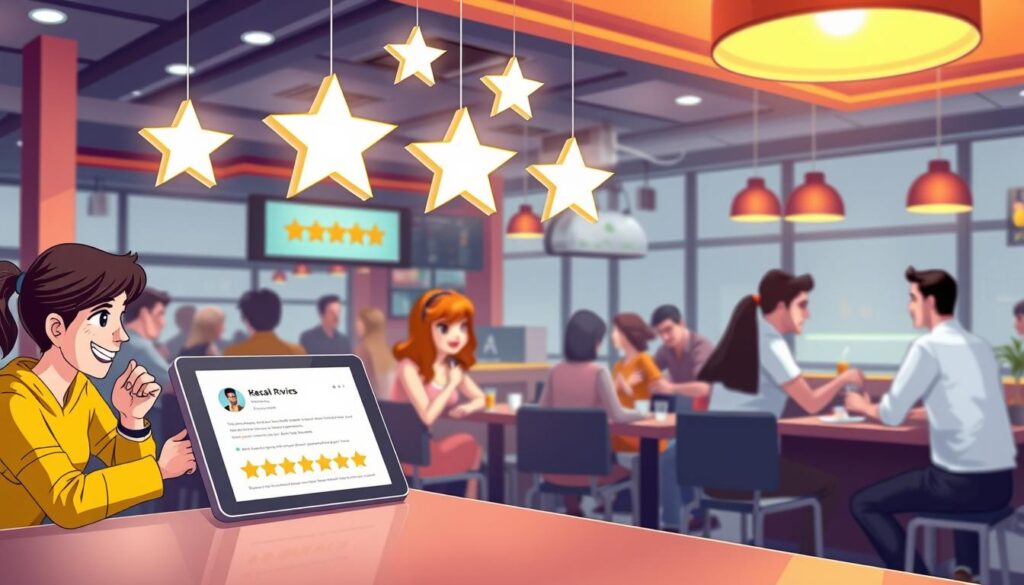
| Statistic | Implication |
|---|---|
| 90% of customers research a restaurant online | Having a strong online presence is key. |
| 94% of diners choose restaurants based on online reviews | Good reviews help attract customers. |
| 1 negative review can cause a 22% customer loss | Quickly fix any bad feedback. |
| 73% of consumers focus on recent reviews | Keep getting feedback to stay relevant. |
| 39% of diners are likely to leave a positive review after a good experience | Make sure customers have a great time to get more positive reviews. |
Use Email Marketing Strategies
Email marketing is a great way for restaurants to connect with customers. It lets them send special offers and updates right to diners’ inboxes. This way, restaurants can keep customers informed about new deals, events, and menu items.
Building Your Email List
Building an email list is key for restaurant marketing. Offering discounts or exclusive news can encourage people to sign up. You can get emails from online orders, mobile apps, and in-person visits.
By engaging with customers in different ways, you can grow your list. This list is important for reaching out to customers in the future.
Crafting Compelling Newsletters
Good newsletters keep subscribers interested. Sending content that matches what diners like makes them more likely to come back. Segmenting your list based on who they are helps tailor messages.
A great welcome email can bring in over $1,000 a month. Meanwhile, emails that celebrate milestones can bring in 30 times more than one-time emails. This shows how important it is to have a good email strategy.
| Strategy | Impact | Statistics |
|---|---|---|
| Email Outreach | Direct Customer Engagement | 15-20 email checks daily |
| Campaign ROI | High Profitability | 4200% ROI |
| Transactional Emails | Excellent Open Rates | Open rate of 80-85% |
| Cart Abandonment | Potential for New Sales | Up to $2,450/month from abandoned carts |
| Feedback Emails | Boost Customer Satisfaction | Positive impact when sent within 24 hours |
Host Events and Promotions
Events and promotions can really boost your restaurant’s image and draw in new customers. With a bit of creativity, you can turn any day into a special event. This can make your customers more loyal and help your sales grow.
Try hosting interactive events, themed nights, and special occasions. These can make your place lively and get people coming back for more.
Types of Events to Consider
- Themed Nights: Themes like taco Tuesdays or pasta nights can really draw a crowd.
- Cooking Classes: Teach your customers how to make popular dishes or cocktails. It’s a fun way to engage them.
- Wine Tastings: Pair different wines with your food to attract wine lovers. It can make dining more special.
- Birthday Specials: Give discounts or free desserts on birthdays. It encourages people to come back and brings in bigger groups.
- Interactive Experiences: Set up ‘build your own’ stations. It’s fun and adds a creative twist to dining.
Promoting One-Time Offers
Once you have events planned, promoting them is key to getting people there. Use social media, email newsletters, and local ads to spread the word. Online contests can also help get your events noticed and boost engagement.
Offer personalized discounts based on what customers have ordered before. Share customer feedback on social media to build trust and interest in your offers. Events and promotions can really help your sales and make customers happier.
| Type of Event | Potential Benefits |
|---|---|
| Themed Nights | Attracts repeat customers, encourages group outings |
| Cooking Classes | Increases customer engagement, builds skills |
| Wine Tastings | Enhances dining experience, educates patrons |
| Birthday Specials | Encourages large groups, boosts sales during off-peak |
| Interactive Experiences | Increases customer spending, fosters creativity |
Collaborate with Local Businesses
Working with local businesses can really help your restaurant grow. It brings more people in and makes your place feel like a part of the community. The trick is to find partners that match your brand and values.
Finding the Right Partnerships
Look for businesses that offer things you don’t. Team up with local farms for fresh food, nearby wineries or breweries, and event spaces. These Community Partnerships can make your menu better and give customers a special experience.
Working with hotels and Airbnbs can bring in travelers looking for places to eat. Helping local charities can also make your restaurant look good and attract people who care about social causes. Remember, 91% of people might switch brands if they support a good cause.
Cross-Promotion Opportunities
Doing cross-promotions can help you reach more people. Try hosting events together, special nights, or unique menu items. This can make your restaurant stand out.
Restaurants that work with local businesses might see a 30% increase in sales of local items. This is because people love trying new, local flavors. Being part of community events can boost your brand by 20%.
Using social media together can also help you reach more people online. Offering special deals through these partnerships can keep customers coming back. This helps you keep a strong connection with your customers.
Analyze and Adjust Your Marketing Strategies
In today’s fast-paced restaurant world, it’s crucial to keep checking your marketing plans. This ensures you grow and stay in line with new trends. By using Marketing Analytics from social media and email, you can see what works and what doesn’t. This helps you make your marketing better.
Checking your progress against important goals helps you make smart choices. These choices can lead to more success in the future.
Measuring Success with Analytics
To stay ahead, your restaurant needs to be ready to change its marketing. The move to digital means customers expect easy experiences, from looking at menus to booking tables. By understanding these changes, you can make your online presence better.
This leads to happier customers and more people coming to your restaurant.
Adapting to Market Changes
It’s also important to know who your customers are. This helps you create offers that fit their needs. With almost 90% of people looking up restaurants online, making your website easy to find is key.
By using customer data, you can send messages that really speak to your guests. This ongoing effort not only gets more people involved but also keeps them coming back.

